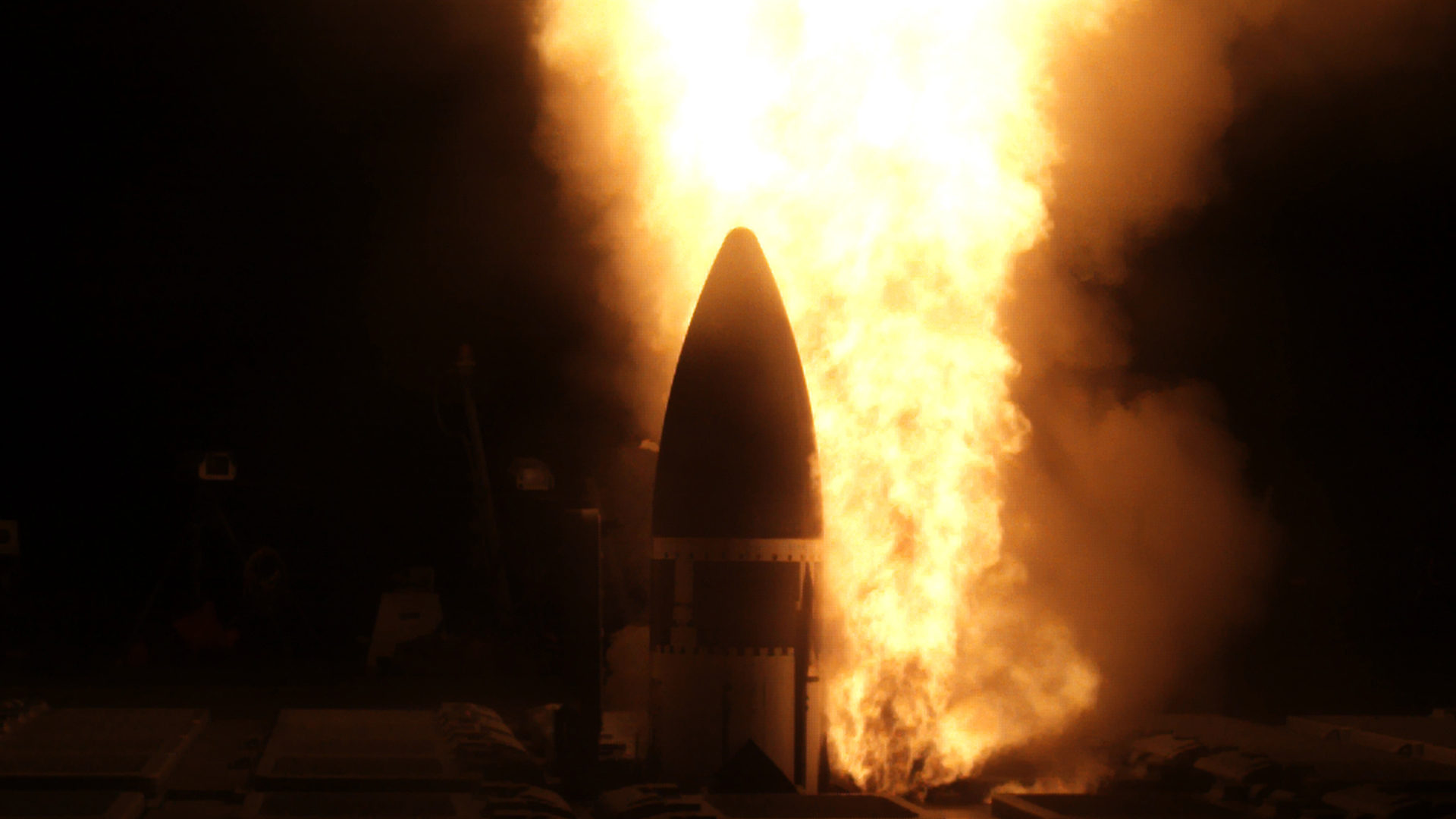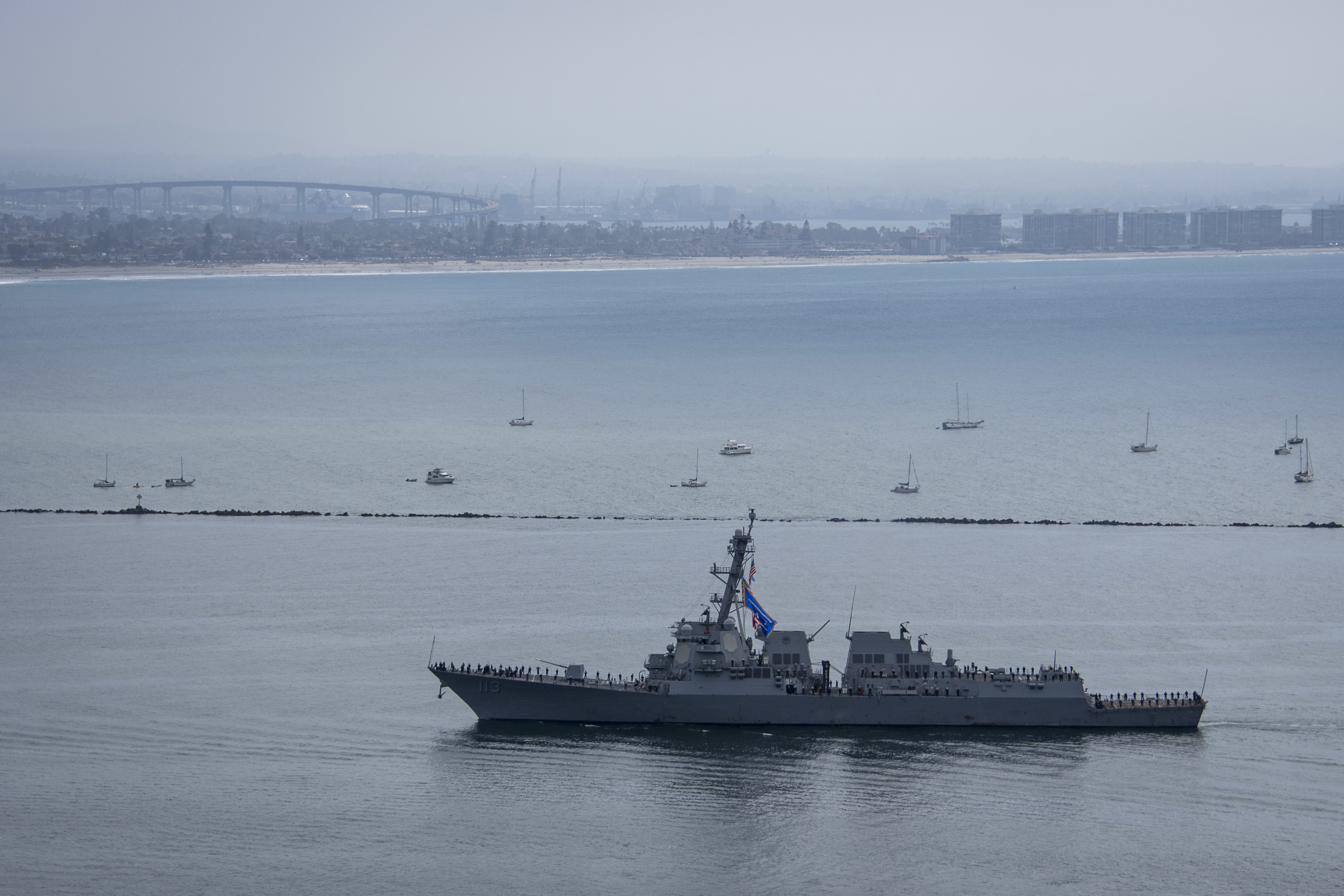
The Missile Defense Agency proved that a Navy destroyer with a Standard Missile-3 Block IIA can stop a simple intercontinental ballistic missile threat, but more work remains to prove whether this combination could contribute to homeland defense, the MDA director said Wednesday.
Vice Adm. Jon Hill described the Flight Test Aegis Weapon System (FTM) 44, which took place in the Pacific in November after pandemic-related delays earlier in the year: A simple ICBM target was launched from the Army’s Ronald Reagan Ballistic Missile Defense Test Site on the Kwajalein Atoll in the Marshall Islands. Satellites detected the launch, and a slew of satellites and sensors, including on the Pacific Missile Range Facility in Hawaii, tracked the target. Arleigh Burke-class destroyer USS John Finn (DDG-113), positioned hundreds of miles east of Hawaii, launched an SM-3 Block IIA missile from its deck based on its best fire control solution at the time, and the missile itself maneuvered to successfully hit the target as it received more information in flight.
The goal of the test, Hill said while speaking at the annual McAleese FY 2022 Defense Programs Conference, was “to prove that we have the ability to leverage the robustness in the [Aegis] program, so that was really the first test just to see if it’s feasible. And we learned a lot.”
Hill said the crew of John Finn, with limited data due to limited sensor coverage across the vast Pacific, maneuvered the ship to get the highest probability of kill.
“It maneuvered, shot the missile; lots of uncertainty because of lack of sensor coverage for such a long-range flight where we were doing the exercise. So what we actually saw was a really high divert [from the missile]. So kind of two walkaways from that first test, which is why I think it was really important, was that it was the longest propagated error or uncertainty that we’ve ever seen in any test. And then we had the highest divert – that meant the [SM-3 IIA] missile was maneuvering to actually take it out, and it still took it out, which is really great,” Hill continued.
“In terms of feasibility, did we accomplish the mission? Absolutely. Every test objective achieved in November.”
Hill was asked about an April Government Accountability Office report that cited concerns about the Aegis Combat System/SM-3 IIA pairing for the homeland defense mission – as opposed to the regional defense mission it was built for, to protect a high-value asset such as an aircraft carrier from an intermediate-range missile – and whether the simple ICBM target used in the November test was representative of the real world.

Hill made clear that MDA started simple and has plans to scale up and see if the Navy’s offering could be added in as another layer for homeland defense in Hawaii, off California or elsewhere.
“So what’s next? What’s next is to go against a more complex intercontinental ballistic missile threat, and maybe even change the scenario. This scenario was a defense of Hawaii scenario against a rogue nation – you guess which one out there in the Pacific – and in the future we’re going to go to a more complex [threat], and that’s within the next couple years,” he said.
“So we’re still analyzing data from November, and then we’re going to make upgrades and changes to the combat system, and we’ll make changes to the missile in terms of threat set to take on a higher end class threat.”
MDA and the military services would have to further integrate systems together to make this a credible layer in the homeland defense network, Hill said. During the November test, the MDA commanded and controlled the event from the Missile Defense Interoperability and Operations Center in Colorado Springs, Colo., using the Command and Control Battle Management and Communication System (C2BMC) to receive satellite and sensor data and feed it to John Finn, which fired its missile on remote without having access to the sensor data itself. While that worked in a controlled environment, for a permanent homeland defense mission the ship would need to be better integrated into U.S. Northern Command’s network to fully share information and targeting data.
Hill said that Aegis has been integrated to operate with the Terminal High Altitude Area Defense system, and THAAD has been integrated with the Patriot missile defense system, but MDA hasn’t integrated all the regional defense systems with homeland defense systems.
Beyond the actual integration and engineering work, Hill added that there was a policy question to answer, too.
“Do we want ships in that role of being off the West Coast … defending against ICBMs as a layer to the Ground-Based Mid-Course Defense? That’s an incredible conversation, we’re having that now, and it’s hard to predict where it will go.”
Asked on Thursday during the Naval Postgraduate School’s acquisition research symposium if the Navy has the capacity and appetite to use destroyers for homeland defense, Hill said much of it comes down to what ships are available for the mission.
“I think if you asked Gen. [Glen] VanHerck from NORTHCOM about his confidence in defending the nation today, the answer would be confident. But as the threat evolves, right, you start to see a little change in that view. And so it’s been viewed for a while that the Navy can play a role in that area, but it becomes an asset problem,” Hill said. “There are only so many ships we have up there. And they’re multi-mission ships, and they have a lot of roles around the globe to execute.”
“I’m really not in the decision loop other than doing the technical aspects of those options [that] exist,” he continued. “So the conversation will continue, and it’s anybody’s guess as to where it will go.”





